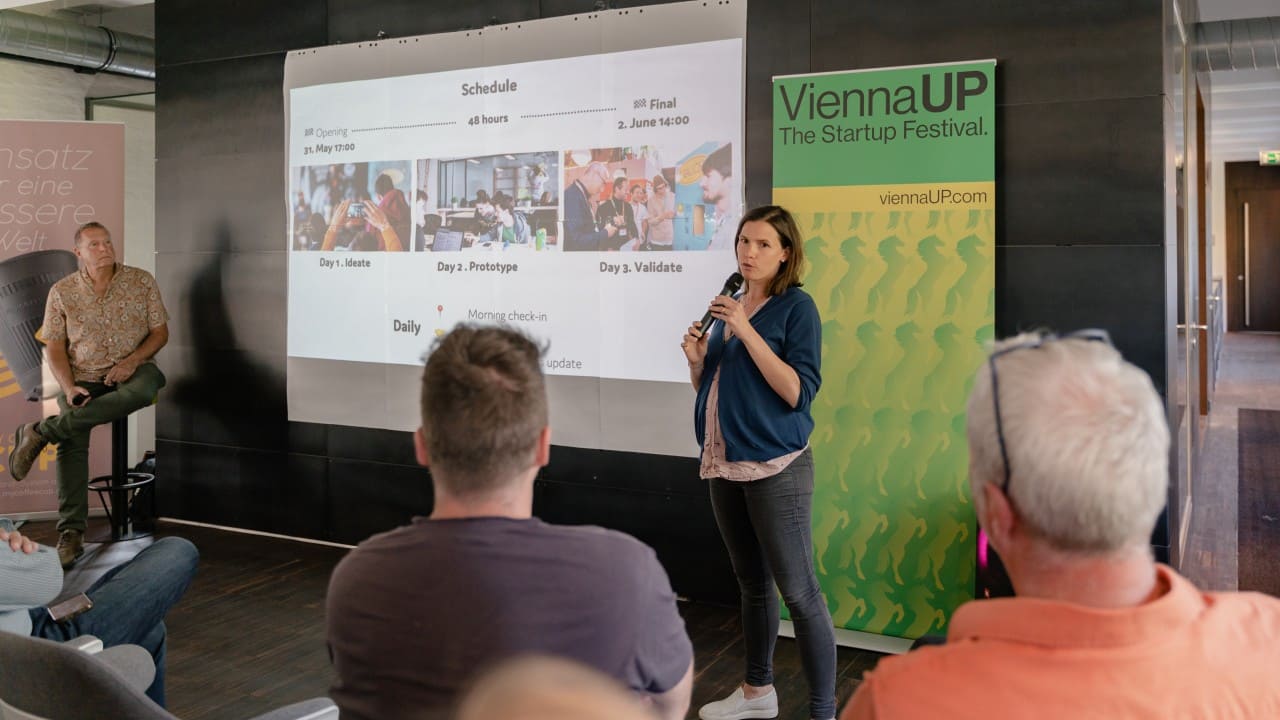
Structure iterative process to validate idea
What Does an Effective Hackathon Process Look Like?
This is the eighth article of a series presenting our learnings from 10 years of InnoDays.
Lesson #8: Structure iterative process to validate idea
Innovation is rarely a linear journey. Great ideas don’t emerge fully formed; they need to be shaped, tested, and refined. Over the years, we’ve learned that structuring an iterative process is crucial to transforming an idea into a viable solution. At InnoDays, we follow a structured three-step approach informed by Design Thinking—Ideate, Prototype, Validate—that accelerates learning and increases the chances of success.
Step 1: Ideate—Generate and Shape Ideas
The journey begins with participants individually coming up with ideas to ensure they work on challenges that interest them most and are well-prepared. This also helps avoid group bias. When teams come together, they can take the best elements of everyone’s idea and get a fresh start as a team. During this phase, we build in enough time for feedback from company partners and external mentors who are field or innovation experts, ensuring that teams refine their ideas effectively.
Key Takeaways:
- Encourage diverse perspectives to enhance creativity.
- Select ideas based on a balance of innovation and practicality.
- Leverage feedback from industry experts to strengthen ideas early on.
Step 2: Prototype—Bring Ideas to Life and Test Assumptions
With an idea in hand, it’s time to build something tangible. Prototyping helps test assumptions by engaging with potential users early on. This process is not about perfection— it’s about learning as fast as possible. The best prototypes are simple, cost-effective, and designed to gather feedback. It is especially beneficial when company partners provide access to potential interviewees in advance, particularly when they are hard to find, such as in B2B challenges. Additionally, we ensure that participants have time to seek feedback from company partners and external mentors, allowing them to iterate quickly and effectively. Depending on the challenge, prototypes can range from simple cardboard models to digital interfaces or a combination of physical and digital components to recreate the customer experience.
Key Takeaways:
- Build quick and low-cost prototypes to validate key assumptions.
- Talk to potential users to understand if the idea solves a real problem.
- Be ready to pivot based on insights rather than getting attached to initial concepts.
- Secure early access to relevant interviewees, especially for B2B challenges, through company partners.
- Use expert feedback to refine prototypes and improve viability.
- Prototype formats can range from physical mockups to digital solutions or hybrid models.
Step 3: Validate—Refine and Present the Solution
Validation is where an idea meets reality. Teams gather feedback from target users and refine their solution accordingly. This phase also involves presenting the concept to company partners, who provide additional insights and potential pathways for further development. At InnoDays, validation happens at the Solutions Expo, where company partners, mentors, and visitors can experience the solutions firsthand—similar to a science fair—rather than just attending presentations.
Key Takeaways:
- Test the solution with real users and adapt based on feedback.
- Showcase solutions interactively at the Solutions Expo to engage a broader audience.
Why Structure Matters
A structured process provides clarity, fosters collaboration, and ensures that teams don’t get stuck in endless ideation without action. It creates momentum and increases the chances of turning an initial idea into an impactful solution. At InnoDays, we’ve seen how this approach helps teams move from uncertainty to execution in a short time. You can take a look at our events’ schedule at innodays.org.


No Comments
Sorry, the comment form is closed at this time.